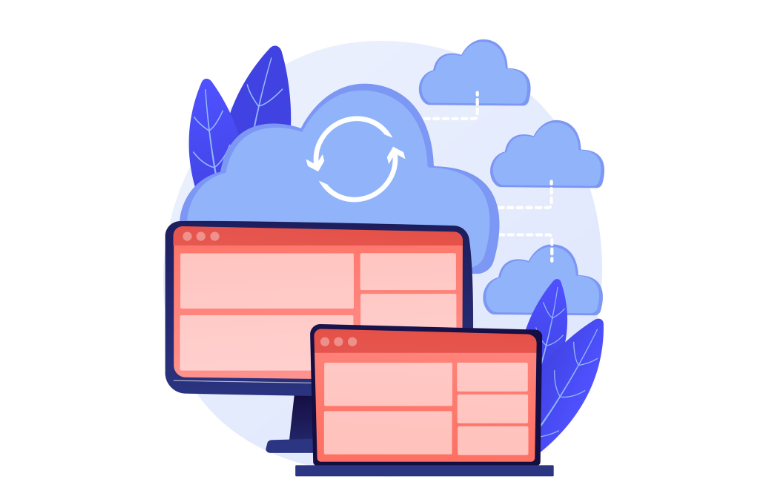Large Language Models (LLMs) are the backbone of today’s AI revolution, powering everything from chatbots like ChatGPT to advanced coding assistants. These models are reshaping industries, automating tasks, and even sparking debates about ethics and creativity. But how exactly do they work, and why are they so transformative? Let’s dive in.
Table of Contents
What Are Large Language Models (LLMs)?
Large Language Models (LLMs) are advanced AI systems trained on massive text datasets—think books, websites, research papers, and social media posts—to understand, generate, and manipulate human language. Unlike traditional algorithms, LLMs use deep learning and neural networks to identify patterns in data, enabling them to perform tasks like translation, summarization, and creative writing. With llm also know Deep learning VS Machine learning.
Key Characteristics of Large Language Models
- Scale: Trained on terabytes of data with billions (or trillions) of parameters (e.g., GPT-4 has ~1.7 trillion).
- Transformer Architecture: Use self-attention mechanisms to process context (more on this below).
- Generative Power: Produce human-like text, code, and even images.
How Do LLMs Work? Breaking Down the Tech
1. Neural Networks & Deep Learning
LLMs mimic the human brain’s structure through artificial neural networks. These networks consist of interconnected layers of nodes (neurons) that process data. During training, the model adjusts weights between nodes to minimize errors, learning to predict the next word in a sequence.
2. Transformer Architecture
Introduced in Google’s 2017 paper “Attention Is All You Need”, transformers revolutionized AI with self-attention mechanisms. Here’s how they work:
- Self-Attention: Analyzes relationships between words in a sentence. For example, in “The bank by the river flooded,” the model links “bank” to “river” instead of a financial institution.
- Positional Encoding: Tracks word order to understand context.
3. Training Stages
- Pre-training: Models learn grammar, facts, and reasoning from vast datasets (e.g., Wikipedia, Common Crawl).
- Fine-tuning: Specialize models for tasks like customer service or medical diagnosis using smaller, curated data.
- Prompt Engineering: Users guide outputs with specific instructions (e.g., “Summarize this in 3 bullet points”).
Real-World Examples of LLMs
1. ChatGPT (OpenAI)
- Use Case: Generates essays, code, and answers questions conversationally.
- Example: Ask, “Explain quantum computing to a 5-year-old,” and it responds with analogies like “imaginary computers that use tiny particles.”
2. BERT (Google)
- Use Case: Powers Google Search’s understanding of queries.
- Example: Recognizes that “Java” refers to the island in the query “Java vacation spots” vs. the programming language.
3. Llama 2 (Meta)
- Use Case: Open-source model for research and commercial projects.
- Example: Startups use Llama 2 to build custom chatbots without licensing fees.
4. IBM Granite
- Use Case: Enterprise solutions for customer service and data analysis.
- Example: Analyzes customer feedback to identify trends in real time.
5. Gemini (Google)
- Use Case: Multimodal model processing text, images, and video.
- Example: Generates video captions or describes visual content for accessibility.
Applications of LLMs Across Industries
1. Healthcare
- Diagnosis Support: Analyze symptoms and medical history to suggest potential conditions.
- Drug Discovery: Scan research papers to identify promising compounds.
2. Customer Service
- 24/7 Chatbots: Resolve queries instantly (e.g., “Track my order” or “Reset password”).
- Sentiment Analysis: Detect frustration in emails and escalate to human agents.
3. Education
- Personalized Tutoring: Generate practice problems tailored to a student’s learning pace.
- Automated Grading: Evaluate essays for grammar and coherence.
4. Finance
- Fraud Detection: Flag suspicious transactions by analyzing patterns.
- Report Generation: Summarize quarterly earnings into digestible insights.
5. Software Development
- Code Generation: GitHub Copilot writes Python functions based on comments.
- Debugging: Explain error messages and suggest fixes.
Advantages vs. Limitations of LLMs
Advantages
- Speed: Draft a 1,000-word article in seconds.
- Cost-Efficiency: Reduce manual labor in data entry or content creation.
- Multilingual Support: Translate between 50+ languages accurately.
Limitations
Hallucinations: Invent facts (e.g., ChatGPT once cited a fake court case).
Bias: Reflect stereotypes in training data (e.g., gender roles in job descriptions).
Environmental Impact: Training GPT-3 emitted 552 tons of CO₂—equivalent to 120 cars annually.
Challenges in Building & Deploying LLMs
1. Data Privacy
- Risk of leaking sensitive data (e.g., personal info in training sets).
- Solutions: Use synthetic data or anonymize datasets.
2. Computational Costs
- Training GPT-4 cost over $100 million.
- Workaround: Use smaller, domain-specific models.
3. Ethical Concerns
- Deepfakes: Generate fake news or impersonate voices.
- Mitigation: Implement watermarking for AI-generated content.
The Future of LLMs: Trends to Watch
1. Multimodal Models
- Combine text, images, and audio (e.g., GPT-4V analyzes spreadsheets and charts).
2. Edge AI
- Run LLMs on devices (like smartphones) for faster, offline access.
3. Ethical AI Frameworks
- Regulations like the EU AI Act to ensure transparency and accountability.
4. Specialized LLMs
- Industry-specific models for law, healthcare, or engineering.
How to Get Started with LLMs
1. For Developers
- Tools: Use Cloudflare’s Workers AI for no-egress model training.
- Frameworks: Experiment with Hugging Face’s open-source libraries.
For Businesses
- Start with APIs: Integrate OpenAI or IBM Watsonx for customer support.
- Focus on Governance: Audit outputs for bias and accuracy.
Conclusion
Large Language Models are more than just chatbots—they’re versatile tools reshaping industries, boosting productivity, and democratizing access to information. While challenges like hallucinations and bias persist, advancements in ethical AI and specialized models promise a future where LLMs augment human creativity rather than replace it.
FAQ
Can LLMs replace human jobs?
They automate repetitive tasks but require human oversight for creativity and ethics.
What’s the difference between GPT-4 and GPT-4 Turbo?
Turbo is optimized for speed and cost but retains similar capabilities.
Are LLMs safe for handling sensitive data?
Only with robust encryption and data anonymization practices.
How do LLMs handle non-English languages?
Models like BLOOM and PaLM 2 support 100+ languages but vary in accuracy.
What’s next after LLMs?
Multimodal AI combining text, vision, and robotics (e.g., Tesla’s Optimus).




